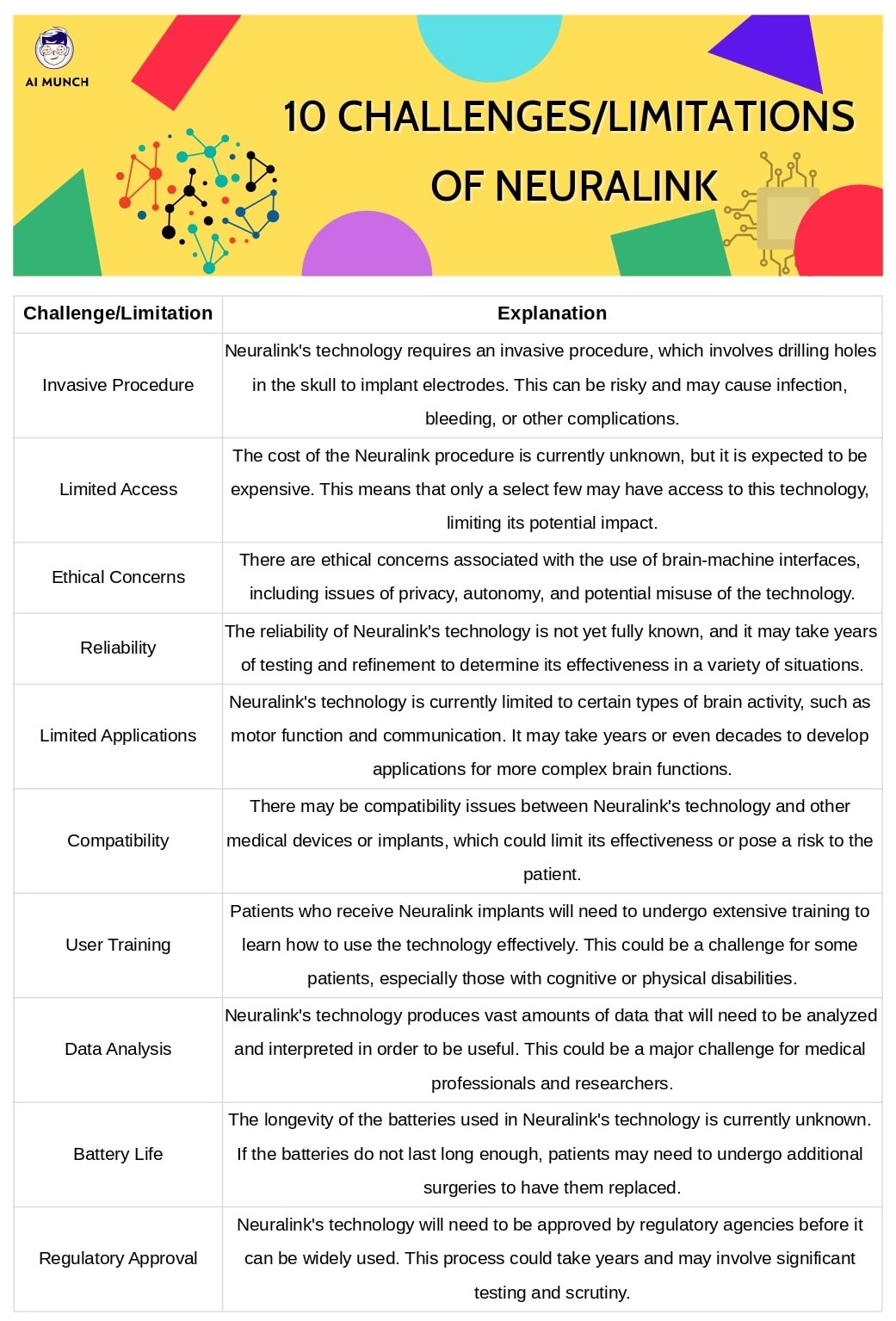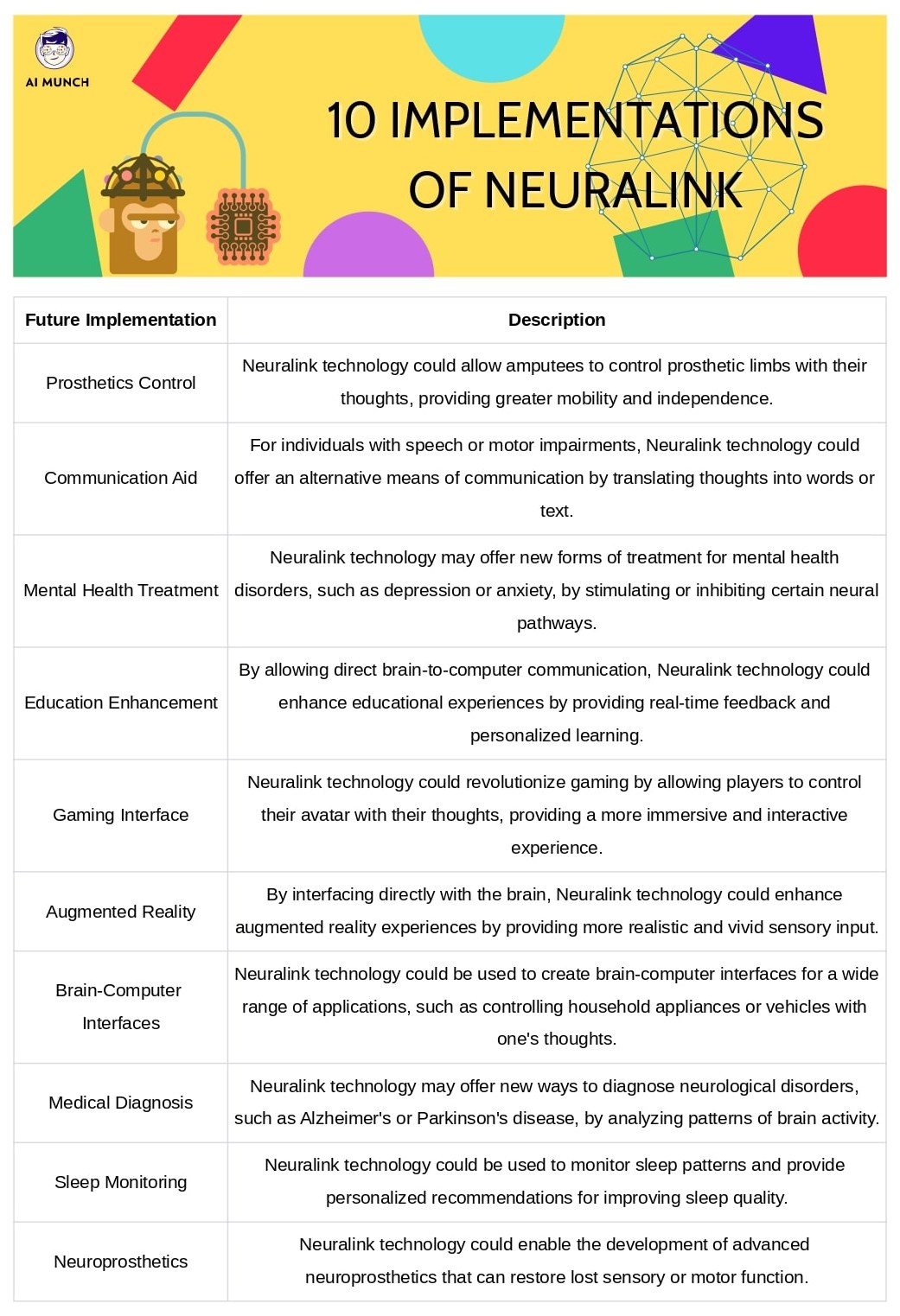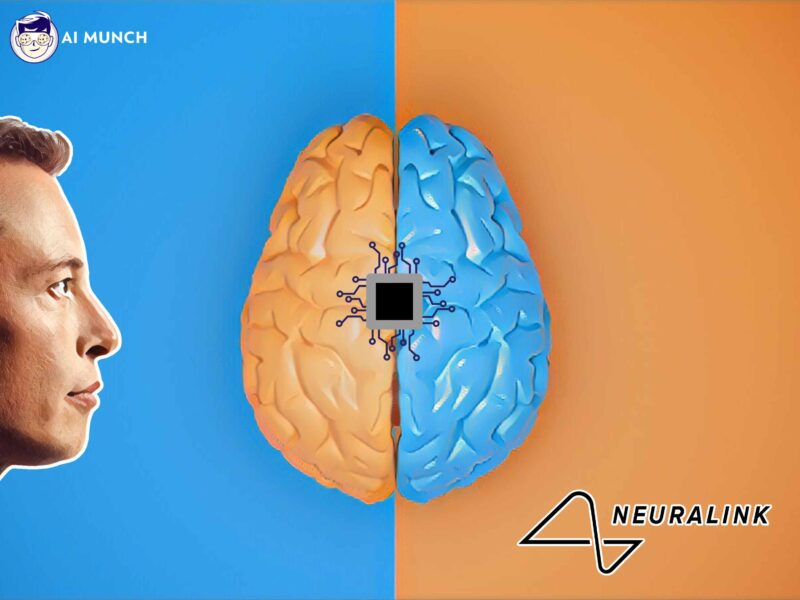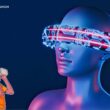I. Introduction
Elon Musk, entrepreneur and billionaire, founded the neurotechnology firm Neuralink in 2016. Its main goal is to make a brain-machine interface (BMI) easier for people and machines to communicate mentally. Neuralink’s state-of-the-art technology may have far-reaching consequences for the future of neuroscience and the way we interact with technology. Musk has been interested in neurotechnology for a long time, and he has spoken out about his worries about the rise of artificial intelligence (AI). Since it started, the company has overgrown by hiring highly skilled professionals in neuroscience and technology. But how does Neuralink work? we will look in detail.
Importance of Neuralink in the field of Neurotechnology
Neurotechnology could significantly alter the healthcare system, the educational system, and many other fields. Neuralink’s work on brain-machine interfaces could allow disabled people to use their minds to control technology and open the door to new ways to treat neurological disorders. There may be far-reaching consequences for the development of neuroscience if we can use Neuralink’s technology to improve our understanding of the brain.
II. What is Neuralink?
A. Company’s mission and goals
Neuralink wants to make technology that lets the brain and electronic devices talk directly to each other. The company wants to make tiny devices implanted to record and stimulate brain activity. Neuralink’s ultimate goal is to connect people’s minds to computers so that people can control electronic devices with their thoughts alone.
B. Technology used by Neuralink
The core of Neuralink’s tech is a tiny implant that can be surgically placed anywhere within the brain. We can monitor and even manipulate brain activity with the implant’s thousands of electrodes. The implant is connected to a minicomputer that can talk to other devices wirelessly. This lets users control their electronic environments with their minds.
C. Potential applications of Neuralink technology
It’s hard even to begin to list how Neuralink could be helpful. One of the most exciting new things is the possibility that people with physical disabilities, like paralysis, can control electronic devices with just their thoughts. Also, Neuralink’s technology could lead to new ways to treat neurological diseases like Parkinson’s and epilepsy. Neuralink technology could also be used in the field of education. It could help people learn better by stimulating their brains directly. Lastly, Neuralink’s technology could open the door to new ways for people and computers to work together, giving people more control over technology.
As a whole, Neuralink is an organization expanding neurotechnology’s limits. Neuralink, with its cutting-edge brain-machine interface technology, could change the way we study the brain in a big way.
III. Why Neuralink?
A. The need for Brain-Machine interfaces
Developing reliable brain-machine interfaces could make it easier for people with motor or cognitive disabilities to use technology. Brain-machine interfaces pave the way for thought-based control of technology, empowering users by giving them a new level of autonomy and choice in interacting with the world around them.
B. Advantages of Neuralink over other brain-machine interfaces
Compared to other types of brain-machine interfaces, Neuralink’s technology has several advantages. First of all, Neuralink’s implantable devices are much more advanced and compact than its rivals. This makes it possible to record and stimulate neural activity more accurately. Second, the implants can be left in the brain for decades without causing any harm because they are made to last that long.
C. Comparison to similar Neurotechnology Companies
Ultimately, Neuralink’s products’ wireless connectivity eliminates the need for bulky cables and lets people control electronic devices directly with their minds.
Kernel, CTRL-Labs, and Blackrock Microsystems are just a few other companies making strides in neurotechnology. These businesses share a common goal—creating brain-machine interfaces—but they go about this goal differently. The kernel uses non-invasive methods, such as electroencephalography (EEG), while CTRL-Labs focuses on making wearable devices that can track nerve activity in the arms and hands.
IV. What does Neuralink do?
A.Explanation of Neuralink’s technology
The brain implant at the core of Neuralink’s technology is tiny and can only be placed there through precise surgery. The thousands of electrodes in the implant can record and stimulate brain activity. The brain implant is connected to a minicomputer to communicate wirelessly with other gadgets. This lets people use their minds to control electronic machines.
B. Surgical procedure used to implant Neuralink devices
Implementing a Neuralink device is a complex surgical procedure requiring advanced medical training. In this procedure, a small hole is drilled in the skull, and a robotic arm inserts the implant. The robotic arm has high-resolution imaging technology that helps it put the implant in the brain in just the right spot. As soon as the implant is in place, the robotic arm is taken away, and the implant is fastened.
C. Brain-machine interface created by Neuralink
By developing a brain-machine interface, Neuralink has made it possible for people to direct machines with their minds alone. The implanted device tracks brain activity and sends signals to a minicomputer. The minicomputer turns the signals into commands that can control electronic devices. The brain-machine interface is made to be very easy to use. It lets people control their devices with just their thoughts, so they don’t have to touch them.
To sum up, Elon Musk founded Neuralink, a neurotechnology company, to create a brain-machine interface that would enable people to mentally control computers and other electronic devices. Neuralink’s technology is a step from competing brain-machine interfaces because of its portability, durability, and wireless connectivity. Neuralink has a lot of possible uses, like helping people with disabilities, making new treatments for neurological diseases, and making learning faster and more functional. Neuralink’s innovative technology has the potential to significantly affect the development of neuroscience and change the way we interact with electronic devices.
V. How does Neuralink work?
A. How Neuralink’s technology interacts with the Brain
The thousands of electrodes implanted directly into the brain tissue used by Neuralink’s technology to record and stimulate neural activity in the brain make the technology possible. Link, a minicomputer linked to the electrodes, can wirelessly exchange data with other gadgets. The Link turns the neural signals that the electrodes record into commands that can be used to control devices or stimulate neural activity in the brain. The brain-machine interface that Neuralink has made is very accurate and can target individual neurons and brain regions with great accuracy.
B. Hardware and software used by Neuralink
The hardware of Neuralink is made up of the device that is implanted, the robotic arm used to place the implant, and the Link computer that is always in wireless contact with the implant. Neuralink uses software with algorithms for machine learning to decode and analyze the neural signals that the implant picks up. Users have much control over how the program looks and acts to fit their needs and preferences.
C. Challenges and limitations of Neuralink technology
Neuralink is having a lot of trouble, partly because it takes a lot of skill to successfully put the device into patients. Neuralink uses a complicated surgery that requires a lot of specialized training. This makes it hard to spread the technology quickly. The body’s immune system could reject the implant, or scar tissue could form around it, making it less effective. Privacy and misuse are two additional ethical issues surrounding brain-machine interfaces.

VI. Companies working with Neuralink
A. List of companies collaborating with Neuralink
Neuralink has several partnerships and collaborations with other companies in the neurotechnology field, including OpenAI, Blackrock Microsystems, and Imec.
B. Role of each company in Neuralink’s projects
OpenAI is an AI research consortium. Neuralink has teamed up with OpenAI to make machine learning algorithms that can understand and respond to neural signals picked up by the implant. Regarding neurotechnology, Blackrock Microsystems is the gold standard for implantable devices. Blackrock Microsystems, with whom they have a partnership, is the manufacturer and designer of Neuralink’s implantable devices. The Institute for Nanotechnology (Imec) is a research institute specializing in nanotechnology. Neuralink has teamed up with Imec to make cutting-edge devices that can be implanted and used to record and stimulate neural activity more accurately.
C. Impact of Neuralink’s partnerships on the future of Neurotechnology
Neuralink’s collaborations with other companies may profoundly affect the future of neurotechnology. Neuralink is improving its technology and developing cutting-edge brain-machine interfaces by forming partnerships with organizations that specialize in artificial intelligence (AI), nanotechnology (Nanotech), and implantable devices (Implantables). As a bonus, collaborations like these may help Neuralink overcome obstacles like the need for cutting-edge machine learning algorithms and implantable devices. When taken as a whole, Neuralink’s collaborations with other businesses highlight the firm’s dedication to developing cutting-edge neurotechnology and better brain-machine interfaces.
VII. Future implications of Neuralink
A. Impact of Neuralink on healthcare, education, and other fields
The healthcare industry stands to benefit significantly from Neuralink’s innovations. Brain-machine interface therapy may help people with Parkinson’s disease, epilepsy, and paralysis, among other neurological conditions. By recording and stimulating neural activity, Neuralink’s technology could help people who have lost a motor, vocal, and other functions because of an injury or illness get them back. Brain-machine interfaces could improve the accuracy of surgery, reducing the number of complications after surgery and making patients feel better.
Brain-machine interfaces could help students improve in school by making remembering what they’ve learned easier. By stimulating certain brain parts, Neuralink’s technology could help students learn and remember more. People with disabilities may also be able to communicate better and have a better quality of life if they use brain-machine interfaces.
B. Ethical considerations of Brain-Machine interfaces
Many moral questions arise with the advent of BMIs. The potential for abuse or misuse of the technology is a significant cause for concern. Brain-machine interfaces can potentially abuse people’s freedom of choice and violate their right to privacy by monitoring their mental processes. Concerns about unequal access to the technology have also been raised due to its expected high cost and the expertise needed to use it effectively. Brain-machine interfaces may have undesirable effects on users’ psychological health and well-being.
C. Speculation about the future of Neuralink and Neurotechnology
It’s hard to see where Neuralink and neurotechnology will go, but brain-machine interfaces will likely improve and become more commonplace. The potential for this technology to revolutionize healthcare, education, and other sectors increases as it advances and becomes more accessible. Even though brain-machine interfaces have clear benefits, they also have risks that must be carefully thought through and managed as the technology develops.

VIII. Conclusion
This article talked about Neuralink, a company started by Elon Musk to improve research and development in brain-machine interfaces. We have looked at the company’s history and plans, the technology it employs, and how it could be used to improve healthcare, education, and other sectors. We’ve talked about the possible effects of Neuralink on society and the ethics behind its creation and use.
Final thoughts on the importance of Neuralink and its potential impact on society.
Artificial intelligence is affecting us in many ways. AI has dark sides as well. This is why the Food and Drug Administration (FDA) disapproves of Neuralink. However, This Tech will get approved as this is very beneficial for the healthcare and education sectors. A pioneer in neurotechnology, Neuralink is an organization to watch. The research and development done by Neuralink could significantly impact on society. But for the benefits of the technology to be realized without hurting people or society as a whole, it is important that the ethical issues surrounding brain-machine interfaces be carefully thought through and managed.
FAQs about Neuralink
Despite launching in 2016, Neuralink has still not received Food and Drug Administration clearance to begin human brain chip testing. It has taken other implant manufacturers years, if not decades, of study to gain approval from the relevant authorities in the United States.
The Canadian-born neuroscientist Syed was born in Pakistan. He built the first neurochip, which links brain cells to a silicon chip, making him a pioneer in the field. Syed has presented his findings on the human brain and his mini-chip at conferences and universities worldwide.
Eventually, Neuralink’s brain chip interface, which can be implanted within the skull, may allow paralyzed patients to regain the ability to move and communicate and restore their sight.
Paralysis, blindness, mental illness, and neurological conditions like Alzheimer’s and dementia could all be effectively cured if this were possible. The ultimate goal is to develop tools to put humans on equal footing with AI.
Musk predicted in April 2021 that using the Neuralink product would allow a paralyzed person to operate a smartphone more quickly with their mind than with their thumbs. Neuralink is confident that its technology will one day enable people with spinal cord injuries to move their limbs by restoring neural activity inside the body.
Do you want to read more? Check out these articles.











1 comment